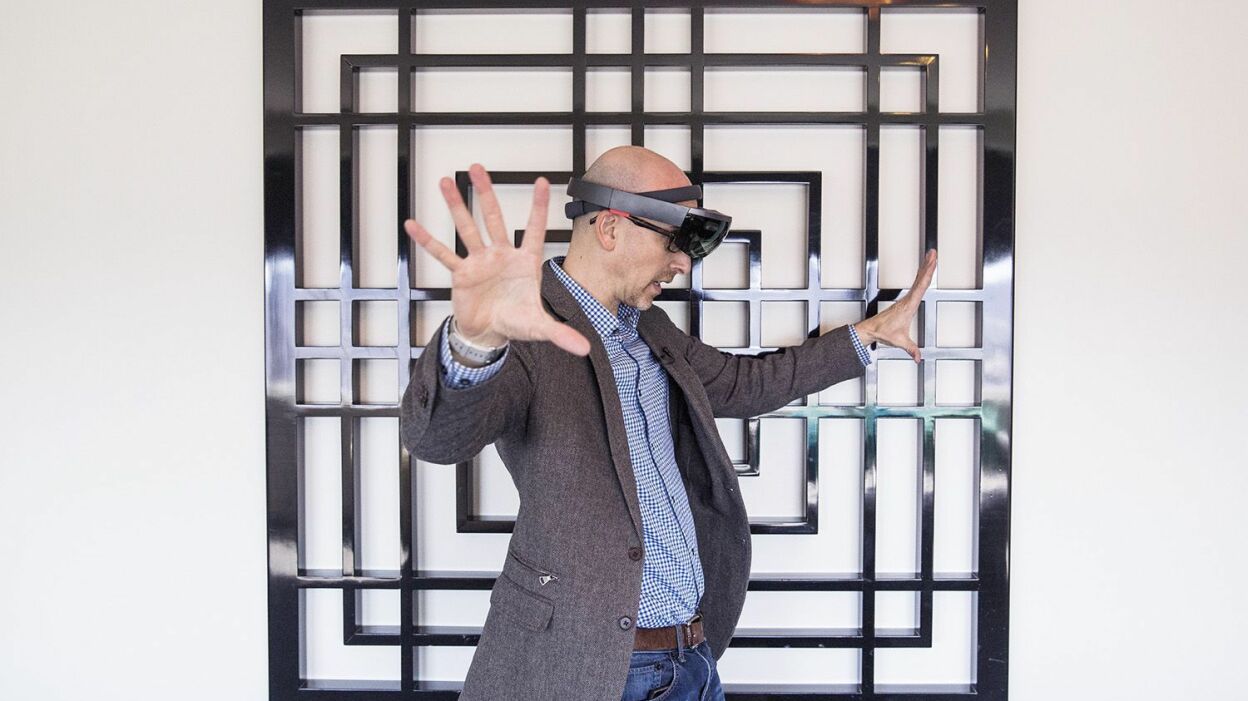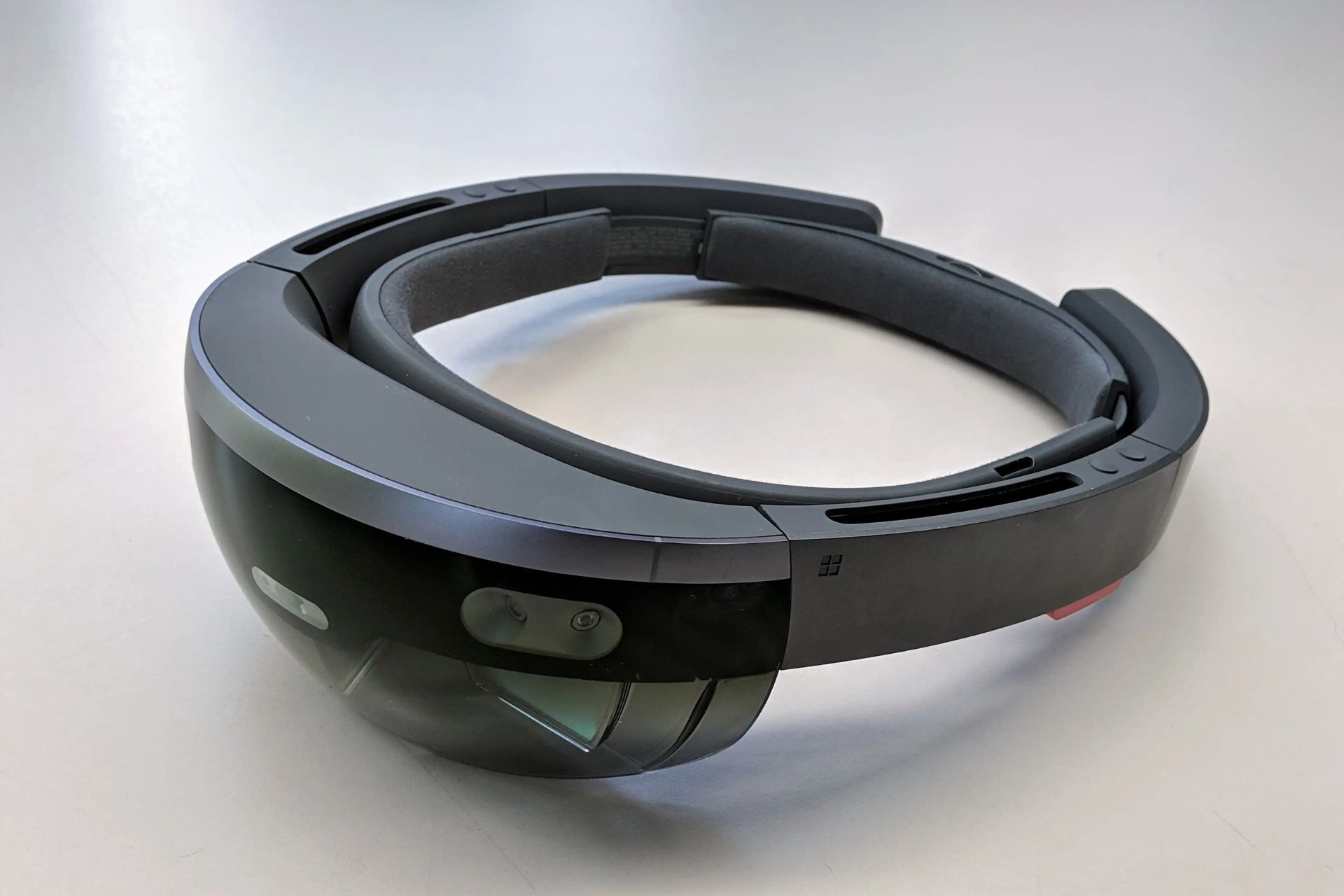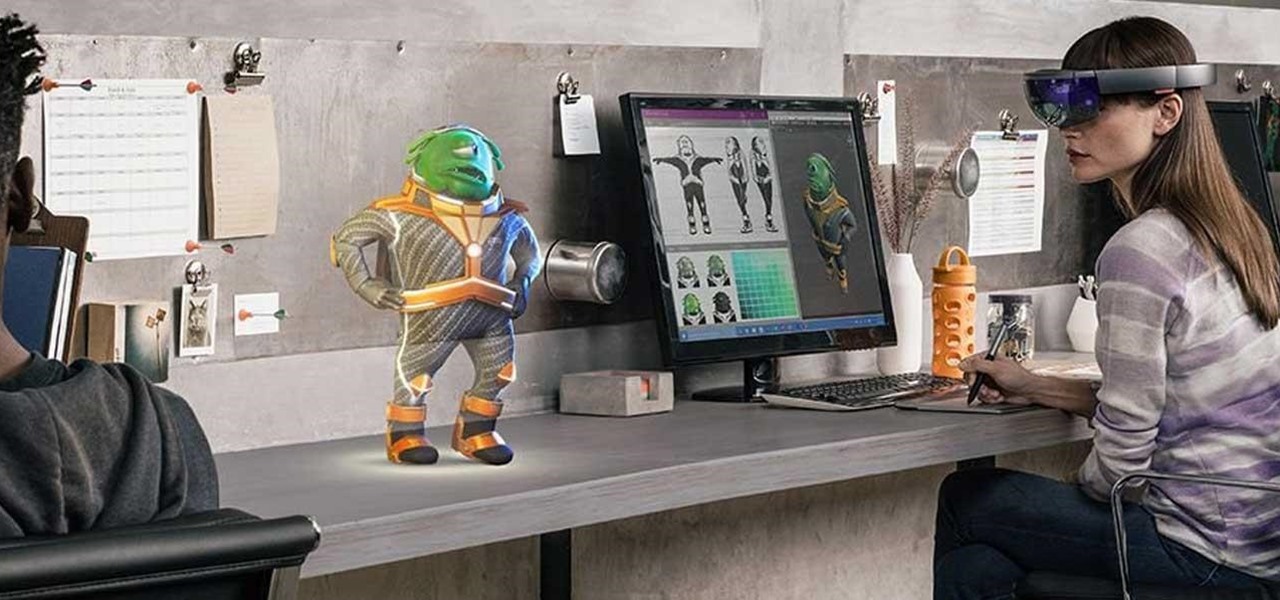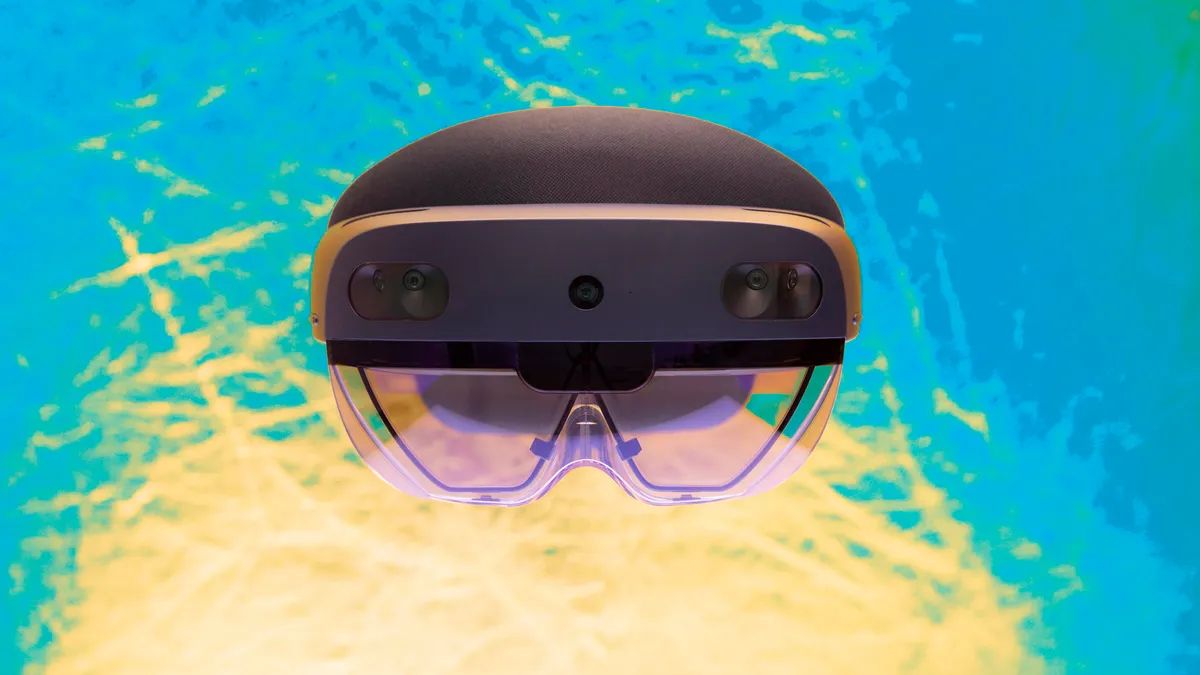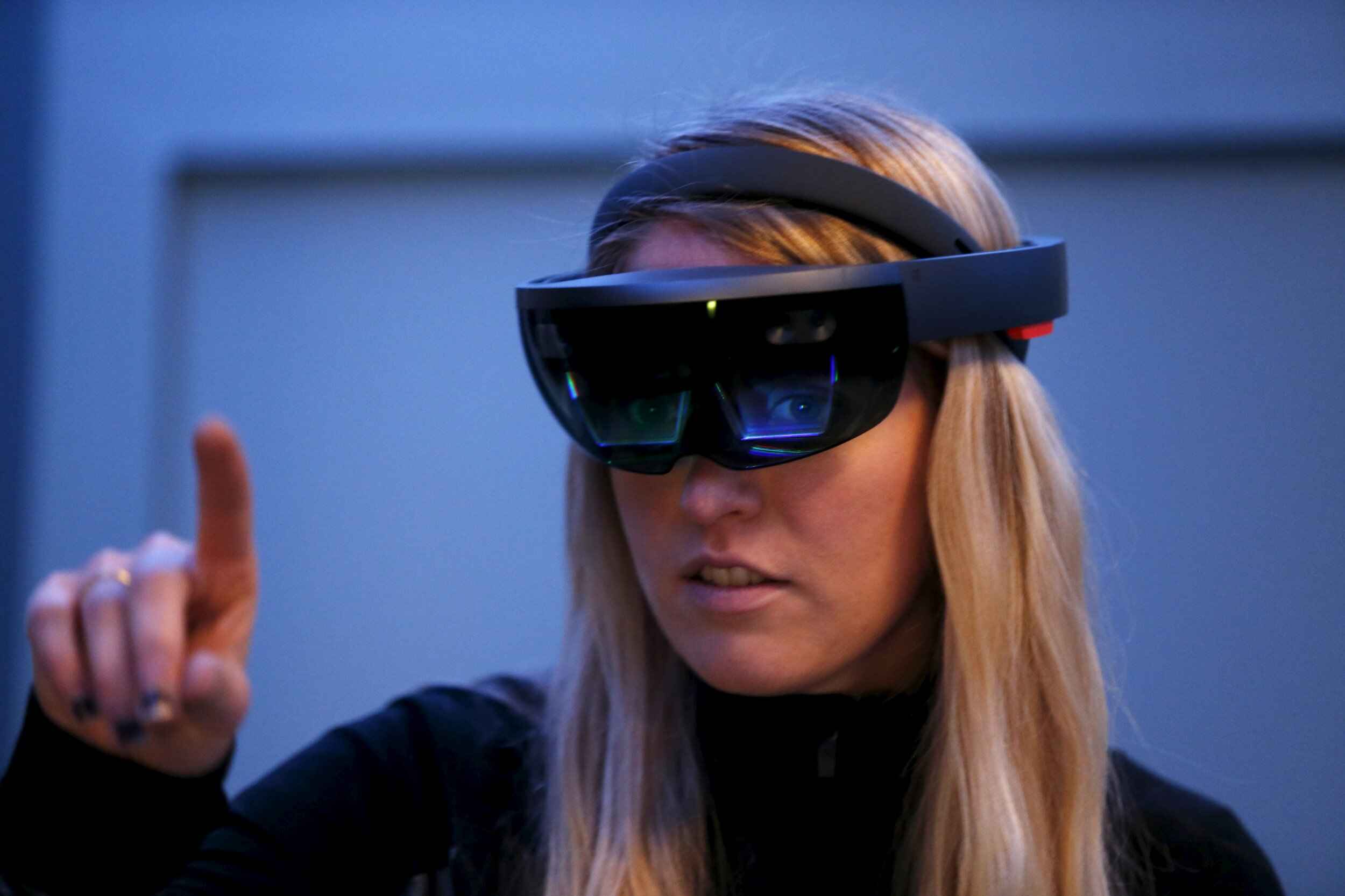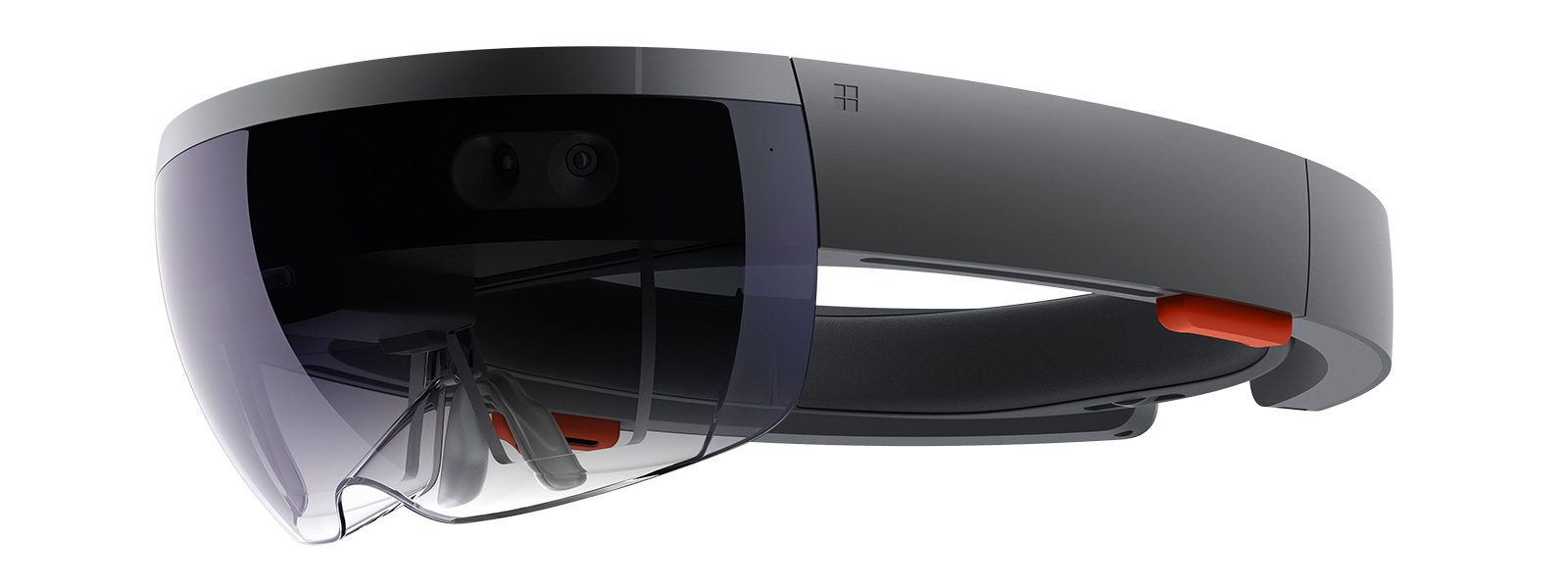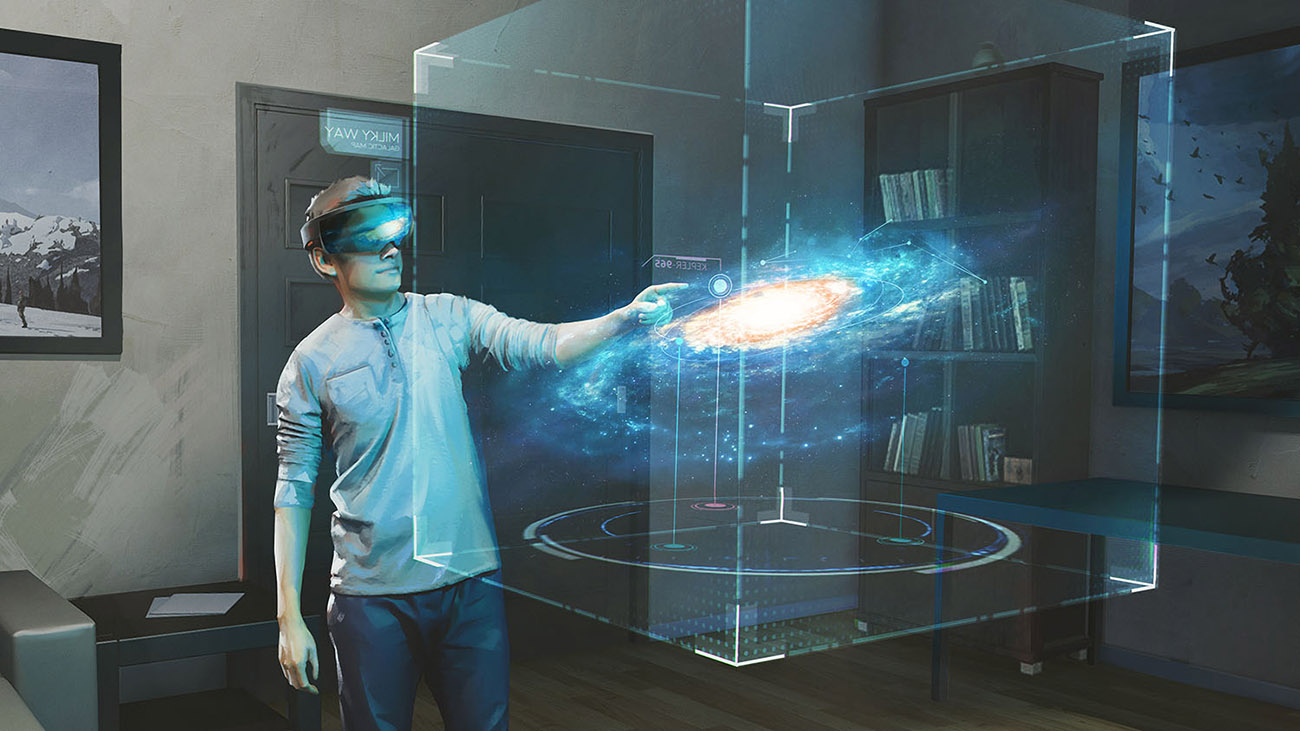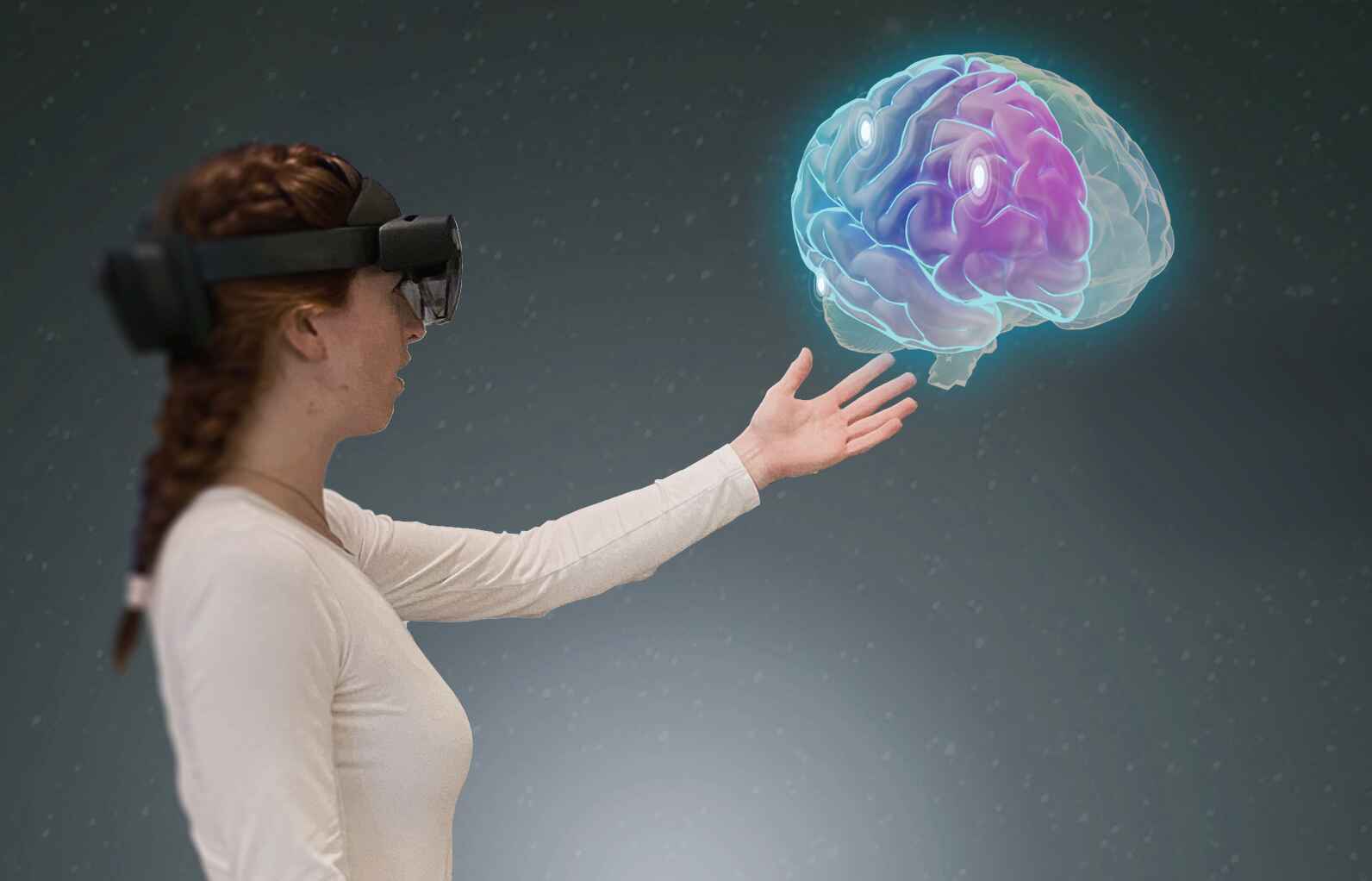Introduction
The world of technology is continuously evolving, pushing the boundaries of our imagination and redefining what is possible. One such groundbreaking invention that has captured the attention of tech enthusiasts and professionals alike is the HoloLens. This revolutionary piece of technology has opened up new possibilities for augmented reality (AR) and has transformed the way we perceive and interact with digital content.
HoloLens, developed by Microsoft, is a head-mounted display device that enables users to see and interact with holographic objects in the real world. It combines cutting-edge hardware and software to create a seamless blend of virtual and physical worlds, providing users with a truly immersive experience.
With the ability to overlay digital content onto the real world, HoloLens has found applications in various industries, including gaming, healthcare, engineering, and education. The possibilities are seemingly endless, as HoloLens is capable of enhancing productivity, fostering innovation, and unlocking new dimensions of creativity.
In this article, we will delve into the fascinating journey of HoloLens, exploring its development, inception, and the advancements it has undergone since its first prototype. So, let’s embark on this technological adventure and discover the incredible story behind the invention of HoloLens.
What is HoloLens?
HoloLens is a cutting-edge augmented reality (AR) device developed by Microsoft. Unlike virtual reality (VR), which immerses users in a completely digital environment, HoloLens overlays holographic content onto the real world. This unique technology allows users to interact with virtual objects while still being aware of their physical surroundings.
The device itself consists of a head-mounted display, sensors, and spatial mapping cameras. The display projects holographic imagery onto the user’s field of view, creating a seamless blend of virtual and physical reality. The sensors and cameras work together to track the user’s movements and ensure that the holograms align accurately with the environment.
One of the standout features of HoloLens is its ability to recognize gestures and voice commands, enabling users to interact with holographic content intuitively. This opens up possibilities for a wide range of applications, from gaming and entertainment to education and productivity.
HoloLens has found applications in various industries. In the field of healthcare, surgeons can use the device to visualize medical images in real-time during surgeries, enhancing precision and reducing the risk of errors. Architects and engineers can create virtual mock-ups of buildings and conduct immersive design reviews, improving efficiency and collaboration. In education, HoloLens can transform classrooms by bringing subjects to life through interactive holographic lessons.
With its advanced spatial mapping capabilities, HoloLens can also create mixed reality experiences by merging physical objects with digital content. This has opened up new avenues for developers to create innovative applications and experiences that blur the line between the physical and virtual worlds.
Overall, HoloLens represents a significant leap forward in the world of augmented reality. Its ability to seamlessly integrate holographic content into our daily lives has the potential to transform the way we work, play, and learn. The possibilities are immense, and as the technology continues to evolve, we can only anticipate more exciting innovations to come.
Development of HoloLens
The development of HoloLens can be traced back to Microsoft’s secretive research division, known as Microsoft Research. It was here that a team of engineers and researchers embarked on a mission to create a device that could blend the digital and physical worlds together seamlessly.
The journey began in 2010, with the formation of a small team under the leadership of Alex Kipman, a visionary engineer at Microsoft. The team set out to explore the possibilities of augmented reality and how it could be brought to life in a practical and innovative way.
Years of research and development followed, with numerous iterations and prototypes being created to refine the technology. One of the key challenges was creating a device that was both lightweight and comfortable to wear, while still delivering high-quality holographic imagery.
In 2015, the world got its first glimpse of HoloLens during a live demonstration at Microsoft’s annual Build conference. The demonstration showcased the device’s ability to overlay holographic objects onto the real world and demonstrated its interactive capabilities.
Following the announcement, Microsoft began accepting applications for the HoloLens Development Kit, allowing developers and enthusiasts to get their hands on the device and start creating applications for the platform. This move was instrumental in fostering innovation and pushing the boundaries of what was possible with augmented reality.
In March 2016, the first wave of HoloLens Development Kits started shipping, marking a significant milestone in the device’s journey. Developers around the world began exploring the potential of HoloLens and creating a wide array of applications, ranging from gaming and entertainment to industrial design and healthcare.
The official launch of HoloLens to the public happened in 2019, with the release of the HoloLens 2. This next-generation device featured improved comfort, enhanced field of view, and a more powerful computing system, pushing the boundaries of augmented reality even further.
Since the initial launch, Microsoft has continued to invest in the development of HoloLens, constantly refining the technology and pushing the boundaries of what is possible. The latest iterations of HoloLens have focused on improving the device’s comfort, field of view, and performance, making it more accessible to a wider range of users, from enterprise professionals to everyday consumers.
With each advancement and innovation, HoloLens has solidified its position as a groundbreaking piece of technology, paving the way for a future where augmented reality plays a more prominent role in our daily lives.
Inception of HoloLens
The inception of HoloLens can be traced back to the early 2010s, when Microsoft began exploring the possibilities of creating an augmented reality (AR) device. The idea was to develop a device that could blend the digital and physical worlds together, revolutionizing the way we interact with technology.
It was during this time that Alex Kipman, a visionary engineer at Microsoft, spearheaded the project that would eventually become HoloLens. Kipman and his team became fascinated with the concept of augmented reality and saw the potential it held for transforming various industries.
The vision for HoloLens was to create an untethered device that could overlay holographic content onto the real world, enabling users to interact with digital objects in a natural and intuitive way. The goal was to create an immersive experience that would have a wide range of applications, from gaming and entertainment to education and productivity.
The project faced numerous challenges along the way. One of the main hurdles was developing the technology to accurately map and track the physical environment in real-time. Holograms needed to align precisely with the user’s surroundings to create a seamless blending of virtual and physical elements.
Years of research and development followed, with the team at Microsoft Research working tirelessly to refine the technology and create a device that fulfilled their vision. They experimented with different prototypes and conducted rigorous testing to ensure that the device met the high standards they had set.
The team’s efforts culminated in 2015, when HoloLens was unveiled to the world during a live demonstration at Microsoft’s Build conference. The demonstration showcased the device’s capabilities and provided a glimpse into the future of augmented reality.
The response to HoloLens was overwhelmingly positive, with excitement and anticipation building for its eventual release. Developers and enthusiasts eagerly awaited the opportunity to get their hands on the HoloLens Development Kit and start exploring the possibilities of this groundbreaking technology.
The inception of HoloLens marked a significant milestone in the world of augmented reality. It represented the culmination of years of research and development, and the realization of a vision to bring a revolutionary AR device to the market.
With its ability to seamlessly blend digital content with the real world, HoloLens has opened up new possibilities for businesses and industries. From enhancing productivity and collaboration to transforming how we learn and experience entertainment, HoloLens has the potential to revolutionize the way we interact with technology in our everyday lives.
The First HoloLens Prototype
Before HoloLens became the groundbreaking device it is today, it underwent several iterations and prototypes to refine its design and functionality. The first HoloLens prototype was a result of years of research and development, representing a significant milestone in the journey towards creating a seamless augmented reality (AR) experience.
The initial prototype, known as “Project Baraboo,” was unveiled during a private event at Microsoft in 2012. It consisted of a bulky headset with a visor that housed the optical system and sensors. Although the prototype was not as sleek or lightweight as the final product, it showcased the potential for blending digital content with the real world.
The prototype utilized a combination of holographic projection and advanced sensors to enable users to see and interact with virtual objects in their environment. The early version of HoloLens had limited field of view and resolution, but it laid the foundation for future enhancements and improvements.
One of the key features of the first HoloLens prototype was its ability to generate holographic images that appeared to be floating in mid-air. This was achieved through the use of specialized optical technology that projected light onto the user’s retina, creating the illusion of three-dimensional objects.
Despite its early limitations, the prototype demonstrated the immense potential of HoloLens. It opened up possibilities for various applications, from gaming and entertainment to industrial design and healthcare. Microsoft recognized the transformative power of this technology and set out to refine and improve upon the prototype.
Throughout the development process, the team at Microsoft focused on miniaturizing the hardware, improving the field of view, and enhancing the overall user experience. They worked diligently to create a device that was more comfortable to wear, more immersive in terms of visual quality, and more intuitive in its interaction capabilities.
Over time, the prototype evolved, leading to significant improvements in form, function, and performance. Each iteration brought HoloLens closer to the vision the team had for a seamless AR device capable of enhancing everyday life.
Ultimately, the first HoloLens prototype laid the foundation for the incredible advancements that followed. It proved that the concept of augmented reality was not just a fantasy but a tangible possibility. With the dedication and innovation of the team at Microsoft, the bulky prototype was transformed into a sleek, powerful, and transformative device that is now known as HoloLens.
HoloLens Development Kit
When Microsoft unveiled HoloLens to the world, it was not just a finished product ready for consumer use. Recognizing the value of developer feedback and the need for a robust ecosystem of applications, Microsoft introduced the HoloLens Development Kit.
The HoloLens Development Kit gave developers and enthusiasts the opportunity to get their hands on the device and start creating applications for the platform. It allowed them to explore the full potential of augmented reality (AR) and unleash their creativity in bringing holographic experiences to life.
Available for application through the Windows Insider program, developers were selected to participate in the HoloLens Development Kit program and receive early access to the device. This early access provided them with a head start in understanding the capabilities of HoloLens and building applications specifically optimized for the platform.
The HoloLens Development Kit included not only the hardware itself but also the necessary software tools, documentation, and support resources to facilitate development. This ensured that developers had everything they needed to begin their journey in creating interactive and immersive holographic experiences.
By providing access to the HoloLens Development Kit, Microsoft aimed to cultivate an active and innovative developer community. This community played a vital role in pushing the boundaries of what was possible with HoloLens and unlocking the full potential of augmented reality technology.
Developers around the world embraced the HoloLens Development Kit, fostering a rapid growth in the number of applications available for the platform. From gaming to education, from healthcare to industrial design, the HoloLens Development Kit opened up a world of possibilities for developers to explore and create.
The feedback and insights gathered from developers using the HoloLens Development Kit were instrumental in refining the device and its functionality. Microsoft used this invaluable feedback to make iterative improvements and enhancements to future iterations of HoloLens, ensuring that the end product was better suited to meet the needs of both developers and consumers.
Furthermore, the HoloLens Development Kit program helped developers establish a foundation of expertise in creating AR experiences. This knowledge and experience gained during the development phase enabled them to be at the forefront of the augmented reality revolution and shape the future of this emerging technology.
The HoloLens Development Kit was not just a means for developers to create applications; it was a community-driven initiative that laid the groundwork for the growth and innovation seen in the AR space. By fostering collaboration, sharing knowledge, and providing the necessary tools, Microsoft empowered developers to bring their imaginative ideas to life and contribute to the evolution of HoloLens.
Announcement and Launch of HoloLens
The announcement and subsequent launch of HoloLens marked a pivotal moment in the history of augmented reality (AR) technology. It was a groundbreaking step towards realizing Microsoft’s vision of blending the digital and physical worlds and introduced the world to a new era of interactive holographic experiences.
HoloLens was officially unveiled to the public at a live demonstration during Microsoft’s Build conference in 2015. The demonstration showcased the device’s ability to overlay holographic content onto the real world, captivating the audience with its interactive capabilities and potential applications.
Following the announcement, the enthusiastic response from developers, industry professionals, and the general public fueled anticipation for the eventual launch of HoloLens. People were eager to experience firsthand the possibilities that augmented reality could unlock.
In March 2016, Microsoft made the HoloLens Development Kit available for purchase, providing developers with early access to the device. This move allowed developers to start creating applications optimized for HoloLens, laying the groundwork for a robust ecosystem of AR experiences.
Over time, Microsoft continued to refine and enhance HoloLens, incorporating valuable feedback from developers and enthusiasts. The device underwent significant improvements in terms of comfort, field of view, and overall performance, making it even more appealing to a wider audience.
Finally, in 2019, Microsoft officially launched the HoloLens 2. The second-generation device boasted a range of upgrades, including a more ergonomic design, enhanced visuals, and improved gesture and voice recognition. The launch of HoloLens 2 represented a major milestone, demonstrating Microsoft’s ongoing commitment to advancing the capabilities of augmented reality technology.
The launch of HoloLens garnered attention from various industries, as businesses recognized the potential for integrating AR into their operations. From architecture and design to healthcare and education, HoloLens presented opportunities for innovation and improved experiences across multiple sectors.
The reception of HoloLens since its announcement and launch has been overwhelmingly positive. The device has been embraced by developers and enthusiasts worldwide, further expanding the range of applications and experiences available for users.
Through strategic partnerships and collaborations, Microsoft has continued to drive the adoption and evolution of HoloLens. They have worked with various companies and organizations to explore the potential of AR in industries such as manufacturing, construction, and retail.
With each iteration, HoloLens continues to push the boundaries of augmented reality, bringing us closer to a future where interactive holographic experiences are seamlessly integrated into our daily lives.
Continuing Advancements in HoloLens Technology
Since its initial launch, HoloLens has undergone continuous advancements, solidifying its position as a leader in the field of augmented reality (AR) technology. Microsoft has been committed to refining and improving the device, pushing the boundaries of what is possible in interactive holographic experiences.
One of the key areas of advancement has been in the realm of hardware. With each new iteration, HoloLens has seen improvements in terms of ergonomics, comfort, and overall design. Microsoft has made significant strides in reducing the weight and making the device more user-friendly, ensuring that users can comfortably wear HoloLens for extended periods.
Another crucial area of enhancement has been the field of view. Microsoft has worked on expanding the field of view to provide users with a wider and more immersive augmented reality experience. By increasing the range of vision, HoloLens allows for a more seamless integration of holographic content into the user’s environment.
Visual quality has also been a focus of ongoing advancements. Microsoft has made enhancements to the display technology, resulting in improved image sharpness, vividness, and color accuracy. These improvements contribute to a more realistic and engaging holographic experience.
In addition to hardware advancements, Microsoft has also been dedicated to refining the software and user interface of HoloLens. They have continuously updated the operating system, introducing new features and functionalities to enhance the user experience and make it more intuitive.
Gestural interactions and voice commands have undergone improvements as well. Microsoft has been investing in natural language processing and gesture recognition technologies to make the user interface more seamless and responsive. This allows users to interact with holographic content in a more intuitive and fluid manner.
Furthermore, Microsoft’s commitment to expanding the developer community has resulted in a thriving ecosystem of applications and experiences for HoloLens. Developers from around the world continue to unleash their creativity, pushing the boundaries of what is possible with augmented reality. The wide range of applications available for HoloLens spans industries such as gaming, education, healthcare, manufacturing, and more.
Looking ahead, Microsoft has expressed its dedication to further advancing HoloLens technology. They continue to explore innovative ways to enhance user experience, collaboration, and productivity. With ongoing investments in research and development, the future of HoloLens holds the promise of even more exciting and transformative advancements.
As HoloLens technology continues to evolve, we can expect to see further improvements in areas such as hardware, visual quality, user interface, and the growth of an even more extensive ecosystem of applications and experiences. These advancements will bring us closer to a future where augmented reality becomes an integral part of our everyday lives, revolutionizing how we learn, work, and interact with the world around us.
Conclusion
The journey of HoloLens has been one of continuous innovation, pushing the boundaries of augmented reality (AR) technology and revolutionizing the way we interact with digital content. From its inception as a visionary concept to its evolution into a sleek and powerful device, HoloLens has transformed the landscape of AR and opened up new possibilities across various industries.
With its ability to seamlessly blend holographic content with the real world, HoloLens has found applications in fields such as gaming, healthcare, education, and beyond. It has enhanced productivity, transformational learning experiences, and fostered innovation in industries that were previously limited by the constraints of traditional digital interfaces.
Microsoft’s commitment to refining and advancing HoloLens has been evident through ongoing improvements in hardware, software, and user interface. The device has undergone significant enhancements in ergonomics, field of view, visual quality, and interaction capabilities, resulting in a more immersive and user-friendly experience.
The HoloLens Development Kit has been instrumental in fostering a vibrant and collaborative developer community. This community has driven the creation of a diverse range of applications that encompass gaming, healthcare, education, and more. The growth of this ecosystem has further propelled HoloLens as a leading AR platform.
Looking ahead, HoloLens holds great potential for further advancements and innovative applications. As Microsoft continues to invest in research and development, we can expect to see even more exciting features and use cases emerge. The future of HoloLens promises an augmented reality landscape where digital and physical worlds seamlessly coexist – a world where interactive holographic experiences revolutionize the way we live, work, and play.
In conclusion, HoloLens has not only redefined augmented reality but also reshaped our expectations of what technology can achieve. As we witness the ongoing advancements in HoloLens, it is evident that we are on the cusp of a new era where augmented reality becomes an integral part of our everyday lives.







